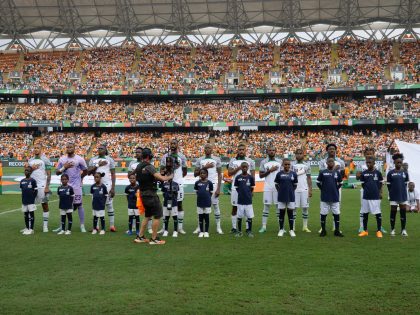Working class Coloured life in South Africa
The film "Shirley Adams" is the story of a coloured mother in Mitchell's Plain in Cape Town, struggling to care for her recently disabled son.

A still from "Shirley Adams."
I’ve only heard good things about the feature film “Shirley Adams” directed by the young Oliver Hermanus–he’s from Cape Town, that should count for something; studied at the London Film School. The film’s plot definitely resonates with me: “… It tells the story of a coloured mother in Mitchell’s Plain on Cape Town’s Cape Flats who struggles to care for her recently disabled son.”
The film stars the veteran South African actress, Denise Newman, in the title role. In its review, in August 2009, Variety’s reviewer described her acting as a resentful mother as an “extraordinary performance.” Variety also pointed to its universal themes: “… The film is set in Cape Town, but it could just as easily be Brixton or Watts or any other cityscape where mindless violence has young people in its grip. The universality of the tale, written by Hermanus and Stavros Pemballis, makes the film fully accessible, and the contemplative nature of its storytelling, without cinematic tricks or melodrama, will win praise everywhere.”
The Hollywood Reporter concluded: “Hermanus uses Jamie Ramsay’s unfussy cinematography to convey the claustrophobia of the characters’ lives with many close-ups of the mother as she bathes, clothes and feeds her stricken son, Donovan (Keenan Arrison), and sees to mundane daily chores.”
Film website, ScreenDaily summarized it as “… half political metaphor, half humanist tragedy and wholly wearing its heart on its sleeve.” It praised the film, but concluded: “… Though technical credits are generally satisfactory, and the camera is handled expertly, relying exclusively on close-ups deprives Hermanus of an essential dramatic tool and lends the picture an unnecessarily irritating uniformity. If the decision was made to save on background production values, it was successful, for it’s impossible to establish the location of the plot without reference to the script. For a picture in which the location has a cardinal importance, that’s a hurdle indeed to overcome.”
The trailer:
Back in South Africa, News24 compared it to New Zealand film, “Once were warriors”: “… Gang violence has been wreaking havoc on communities on the Cape Flats for generations. This is one of the first films to address this issue and it makes no bones about the seriousness of the problem. Any reader who has been the victim of gang violence or been affected by it will be able to identify with this movie’s tough, direct message. It’s not watered-down representation of the ugly truth, hidden behind a pretty story – it shows the situation as it really is. The cinematography is sometimes a bit self-conscious but Hermanus’ direction is sober and to the point. As an attempt to create awareness of gang violence and social and political conditions on the Flats, it’s a must-see.”
Update: The film is now available on streaming services.
Oliver Hermanus, by the way, was the only African filmmaker selected for the 2009 Cannes Film Festival’s Residence du Festival Program where he worked on his second film. The people of the Cape Flats, especially working class coloureds who make up of the bulk of the Western Cape province’s population, usually get rendered as stock characters or political caricature. An exception is documentary; think the work of director Francois Verster (his “The Mother’s House” and the more recent “Sea Point Days”). But generally they’re portrayed as klopse or as victims. When the film played at the Toronto International Film Festival last year, a friend excitedly emailed me that the performances “were on point,” that Hermanus resisted over-stylizing and he did justice to the vagaries of working class coloured life.



















